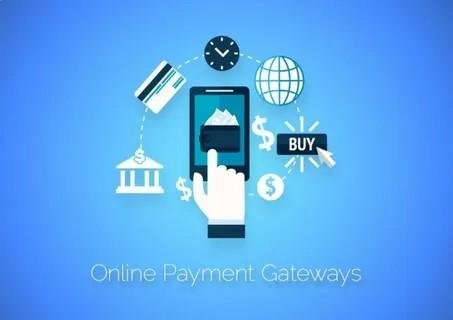The global online payment gateway market, currently valued at USD 127.45 billion in 2024, is projected to achieve a remarkable valuation of USD 318.74 billion by 2034, expanding at a Compound Annual Growth Rate (CAGR) of 9.60%. This significant growth is primarily fueled by the escalating demand for IoT-based payments and continuous technological improvements that are reshaping the digital commerce landscape.
Exhaustive Market Report: A Complete Study
https://www.futuremarketinsights.com/reports/online-payment-gateway-market
Securing and Streamlining Digital Transactions
Online payment gateways are essential for securely connecting customers and merchants, ensuring safe transactions and minimizing financial losses. Their increasing popularity is driven by the widespread adoption of online payment methods and the ubiquitous availability of high-speed internet. The market’s expansion is further propelled by rising demand for mobile payments, booming eCommerce sales, increasing internet penetration, and a fundamental shift towards digital channels for online money transfers.
Companies are increasingly leveraging payment gateways to facilitate secure online transactions, prevent fraud, and provide a seamless shopping experience for consumers, effectively eliminating the need for physical queues in traditional retail settings. Technological advancements and pervasive internet penetration are enabling the proliferation of digital services, mobile application usage, and the promotion of eCommerce in even remote areas, fostering the integration of robust payment infrastructure and merchant solutions.
Transaction methods have evolved rapidly, with numerous third-party payment gateways now securely collecting sensitive data for businesses and online retailers, a direct response to the climbing volume of online transactions. The retail sector, in particular, is undergoing a profound transformation driven by the cashless economy, mobile banking, instant payments, digital commerce, and the influence of regulatory agencies, all of which are propelling the demand for payment gateways integrated with local banking systems.
Historical Performance and Future Projections
Historically, the market demonstrated a CAGR of 10.0% from 2019 to 2023. While the growth rate is projected to slightly moderate to a CAGR of 9.60% from 2024 to 2034, this reflects a maturing market influenced by increased transaction data and the widespread adoption of various online payment methods, including credit cards and mobile wallets.
Despite the robust growth, the market faces challenges, primarily the persistent risk of online fraud and the potential misuse of account information. Such fraudulent activities remain a significant concern that can impede market expansion. The COVID-19 pandemic, however, positively impacted the payment gateway market by accelerating the shift to online payments and boosting eCommerce. The growing importance of Unified Payments Interface (UPI) in the post-pandemic environment is expected to further stimulate growth in the digital sector, even amidst challenges like cyber-attacks and inadequate internet access in remote areas. The market is set to regain momentum due to the emergence of eCommerce platforms and increased internet access, driven by high-speed internet and the demand for mobile-based payments for various services, with both developed and developing nations increasingly relying on debit or credit cards.
Key Trends Shaping the Online Payment Gateway Market
The adoption of QR codes is significantly streamlining online transactions. Most retail stores are now incorporating distinctive QR codes, allowing consumers to make quick and easy payments by scanning them with smartphones or other IoT devices. The interoperability of QR codes across different payment apps enhances convenience, leading to a surge in online payment gateway usage. This system reduces the need for cash or cards, minimizing theft risk and providing a more secure and efficient payment experience. Popular online payment gateways like Gpay, PayPal Holdings, and AmazonPay are leveraging cashback, rewards, and voucher schemes to encourage platform usage, while implementing advanced security measures like biometric scanners to prevent fraud.
The eCommerce industry is a primary driver for the adoption of online payment gateways. The rising demand for mobile payments, increasing internet penetration, and booming eCommerce sales, driven by evolving consumer and merchant preferences, are compelling this growth. Online payment gateways are crucial for simplifying secure online transactions and preventing fraud by encrypting sensitive data. The eCommerce boom necessitates payment gateways with robust security features such as tokenization, fraud detection, and encryption to meet both customer and business expectations.
The increasing adoption of biometric payment cards is spreading contactless payment usage. These cards are gaining popularity over NFC cards due to their elevated transaction limits and enhanced security. Consumers are increasingly using biometric payment cards for mobile phone unlocking and payment processing, driven by reduced administrative burdens and the demand for secure and efficient transactions. This trend creates significant opportunities for online payment gateways, as businesses and financial institutions collaborate with biometric payment service providers to offer smart cards to clients.
Segmental Growth and Regional Dynamics
In terms of gateway type, hosted payment gateways are set to hold a substantial 39.4% market share in 2024, primarily due to their augmented application in third-party transactions. These secure and reliable solutions, which redirect customers to a Payment Service Provider’s (PSP) website for processing, are anticipated to remain popular due to their convenience, security, and ease of use.
By enterprise size, large enterprises with 500-999 employees are increasingly utilizing online payment tools, holding a market share of 26.7% in 2024. This trend indicates a shift towards cashless transactions replacing traditional brick-and-mortar payment operations. Online payment gateways are crucial for these global enterprises, supporting banking dashboards, e-transaction apps, and tokenized transactions, while simplifying payment infrastructure and enabling robust payment strategy execution.
Regionally, the United States is paving the way for online gateways’ growth, projected at a CAGR of 9.60% through 2034, driven by its rapidly developing remote commerce sector and increasing mobile device adoption among all age groups. China’s retail sector is expected to witness significant growth at an 11.70% CAGR, fueled by the widespread integration of mobile payment applications and the transformation towards a cashless economy. Australia and New Zealand’s online gateways industry is anticipated to climb sharply at a 9.10% CAGR, driven by technological improvements and increasing mobile payment adoption. Germany (5.30% CAGR) and Japan (6.00% CAGR) are also seeing steady development in their respective online transaction gateway industries.
Competitive Landscape: Innovation and Security at the Forefront
The online payment gateway market is intensely competitive, with manufacturers heavily investing in innovation, research, and development to uncover new applications within the BFSI industry. Key players are prioritizing safety, quality, and customer satisfaction to attract and retain a larger customer base. Market participants are continuously introducing new features such as automatic reminders, customized processes, seamless document production, and automated tracking to enhance their digital transaction solutions. Furthermore, vendors are developing solutions that comply with various global security standards and agreement audits, focusing on new product development, strategic collaborations, mergers and acquisitions, and company expansions to strengthen their market position.
Key companies in the online payment gateway market include Adyen, Amazon Payments Inc., Authorize.Net, Bitpay, Inc., Braintree, PayPal Holdings, Inc., PayU Group, Stripe, Verifone Holdings, Inc., Wepay, Inc., Square, Worldpay, 2Checkout, and Razorpay. Recent developments highlight the dynamic nature of this competition: NOWPayments revealed stablecoin usage trends in April 2024, emphasizing its commitment to crypto payment innovation. Euronet acquired Singapore-based Infinitium Holdings in February 2024 to enhance online payment security. Tap Payments received payment gateway technology certification from Mada in July 2023, expanding its reach in Saudi Arabia. Additionally, ANZ Worldline Payment Solutions offered advanced payment solutions for Australian merchants in April 2022, showcasing ongoing efforts to cater to diverse segments. These strategic moves underscore the continuous drive for technological advancement and market expansion within the online payment gateway industry.
Get Ahead with Our Report: Request Your Sample Now!
https://www.futuremarketinsights.com/reports/sample/rep-gb-4331
Discover trends shaping similar markets-read our related reports.
Online Clothing Rental Market
https://www.futuremarketinsights.com/reports/online-clothing-rental-market
Online Home Rental Market
https://www.futuremarketinsights.com/reports/online-home-rental-market
Online Food Delivery Services Market
https://www.futuremarketinsights.com/reports/online-food-delivery-services-market
Future Market Insights Inc.
Christiana Corporate, 200 Continental Drive,
Suite 401, Newark, Delaware – 19713, USA
T: +1-845-579-5705
For Sales Enquiries: sales@futuremarketinsights.com
Website: https://www.futuremarketinsights.com
Future Market Insights, Inc. (ESOMAR certified, recipient of the Stevie Award, and a member of the Greater New York Chamber of Commerce) offers profound insights into the driving factors that are boosting demand in the market. FMI stands as the leading global provider of market intelligence, advisory services, consulting, and events for the Packaging, Food and Beverage, Consumer Technology, Healthcare, Industrial, and Chemicals markets. With a vast team of 400 analysts worldwide, FMI provides global, regional, and local expertise on diverse domains and industry trends across more than 110 countries.
This release was published on openPR.



















